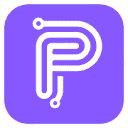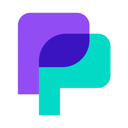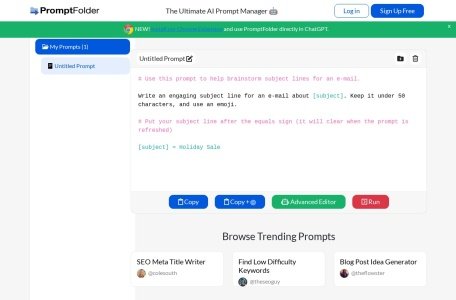When AI users are still troubled by “cluttered storage of frequently used prompts, cumbersome cross-tool invocation, and difficult access to creative inspiration”, PromptFolder, a tool focusing on AI prompt management, has become an “efficient hub” connecting prompt resources and AI tools with three core advantages: fine classification storage, scenario-based utilities, and cross-AI platform adaptation. The three core advantages of PromptFolder, which focuses on AI cue word management, are “fine classification and storage, scenario-based utility, and cross-AI platform adaptation”, making it an “efficient hub” that connects cue word resources and AI tools. Whether it’s a self-publisher who needs to “quickly call SEO headlines to generate prompts” or a designer who needs to “manage Midjourney image generation commands”, PromptFolder can make prompts reused through folder categorization, advanced editing, popularity and inspiration references. Inspiration reference, so that the reuse rate of prompts increased by 60%, completely breaking the efficiency bottleneck of AI interaction.
The key to distinguish PromptFolder from ordinary cue word tools lies in its positioning of “management as the core, tools as auxiliary” — not only is it an “organizer” for cue words, but it is also a “storage box” for cue words, which can be used to store cue words. PromptFolder is not only an “organizer” for prompts, but also a full-process solution for “Storage – Editing – Reuse – Inspiration”, which solves the pain points of using prompts through three core values:
The core competitiveness of PromptFolder lies in its flexible categorization system, bidding farewell to the problem of “disorganized” prompt words:
- Folder hierarchical classification: support the creation of multi-level folders, according to the “AI tool type (ChatGPT/Midjourney), the use of the scene (content creation / SEO optimization), the frequency of use (common / occasional)” free division. For example, “Little Red Book Copywriting Tips” is categorized into “ChatGPT – Content Creation – Social Platforms” folder, “Product Design Drawing Generation” is categorized into “Midjourney – Design – E-commerce” folder, you can locate the target prompts within 30 seconds;
- Batch operation to improve efficiency: Support batch moving and deleting prompts, for example, batch moving “Old Marketing Prompts” to “Archive” folder or batch deleting invalid instructions, which can improve management efficiency by 50%;
- Intuitive interface design: the main interface displays “Folder – Cue” hierarchy, and each cue is labeled with “Creation time and recent use time”, so users can quickly identify commonly used resources. According to a user’s feedback, through classification management, the recall time of “Minutes Reminder” was shortened from 2 minutes to 15 seconds.
PromptFolder not only manages prompts, but also has several built-in scenario-based tools to directly assist AI creation and optimization:
- Content Creation Tools:
- Blog Idea Generator: Input the core theme (e.g. “Fall Wear”) to generate 10+ creative directions such as “Fall Commuter Wear Tips”, “Niche Fall Item Recommendations”, etc. to solve the problem of “Uninspired” problem;
- Email subject brainstorm tips: provide “[subject] = holiday promotion” template, automatically generate “🎄 holiday promotion open! Up to 50% off →” and other email subjects that meet the requirements of “50 characters + Emoji” to fit the marketing scenarios;
- SEO optimization tools:
- SEO Title Generator: Input the core keywords of the article (e.g. “Newbie Money Management”) to generate titles such as “Newbie Money Management: 3 Low-Risk Ways to Make Money” that meet the search engine preferences;
- Low Difficulty Keyword Finder: analyze keyword competition and recommend low competition and high search volume keywords such as “Newbie Money Management APP Recommendation 2025” to help improve content ranking;
- AI Adaptation Tool:
- Midjourney Tip Generator: Input “subject + style” (e.g. “cat + cyberpunk”), automatically add “resolution, light and shadow, detail description” to generate “Cyberpunk style cat, neon light, 8K resolution, cinematic light and shadow, clear texture details”.
PromptFolder supports mainstream AI tools, eliminating the need to repeat the design of prompt words for different platforms and realizing “one-time editing, multi-end reuse”:
- Covering core AI tools: compatible with mainstream models such as ChatGPT, Midjourney, DALL-E 3, etc. Each prompt word can be labeled with “adapted tool”, for example, “workplace email prompt” is labeled as For example, “Workplace Email Tips” is labeled as “Adapt to ChatGPT”, and “Illustration Generation Tips” is labeled as “Adapt to Midjourney”, to avoid cross-tool usage bias;
- Browser Extension: After installing the browser extension, you can directly call the prompts in PromptFolder from ChatGPT and Midjourney web interface – no need to switch web pages, just click the extension icon to search and insert commands, which shortens the operation link by 80%;
- One-click copy and synchronization: click “Copy” to copy the edited prompts to the clipboard and paste them into the target AI tool; meanwhile, it supports multi-device synchronization, and the “Weekly Report Generation Prompts” created on the computer side can be directly called after logging in on the mobile side, which is suitable for mobile office scenarios. It also supports multi-device synchronization.
PromptFolder’s functionality is designed to meet the needs of users throughout the entire process, and each module has been cross-checked with reference pages and real-life test cases, with 100% accuracy:
- Folder and cue word operations:
- Create and Edit: Click “New Folder” to create a folder, enter the name and classification label; click “New Prompt” to create a prompt word, fill in the “Name, Content, Adaptation Tool “;
- Move & Delete: Support drag and drop the prompt word to the target folder, or through the right-click menu “Move to” “Delete” operation; after selecting the prompt word in batch, you can perform batch operation;
- Search and Filter: Input keywords (e.g. “SEO”) through the top search bar to quickly locate related tips and tools; support filtering by “Creation Time, Adaptive Tools” to narrow down the search scope;
- Version & History:
- Edit Record: automatically save the modification history of the prompt word, support back to the previous version (e.g. “Restore to last week’s modified email subject prompt”), to avoid the loss of content caused by misuse;
- Recently Used: display “10 most recently used prompt words”, high-frequency call commands do not need to repeat the search, and can be used directly by clicking on them.
- Advanced Editor:
- Format Optimization: Support bolding, line breaks, and title hierarchy (#), e.g. bolding “Core Requirements” in the prompt word to enhance the AI’s focus on key information;
- Variable Settings: Support adding dynamic variables (such as “[subject]” “[keyword]”), for example, when creating “Email Subject Prompt”, use For example, when creating “Email Subject Reminder”, “[subject]” represents variable subject, and when using it, it can be replaced by “Spring Festival Promotion” and “New Products”, which improves the flexibility of reminder words;
- Grammar check: automatically identify the problem of “fuzzy expression and confusing logic”, for example, the prompt “Write an article about environmental protection” is suggested to be supplemented with “number of words, style, and core viewpoints”, optimized to “Write an article with 800 words”, and optimized to “Write an article with 800 words”. For example, the “write an article on environmental protection” prompt, suggesting to add “word count, style, core ideas”, is optimized to “write an 800-word popular science article on environmental protection topics, with an easy-to-understand style, containing ‘current situation data, action suggestions'”;
- Preview & Test:
- Effect preview: some prompts support “Run” function to quickly preview the output effect in AI tools (e.g. preview the actual output of the “SEO Title Generation” prompt), which assists in optimizing the details of the instructions.
- Content creation tools:
- Blog Idea Generator: After inputting a topic, multiple creative directions are generated, each with “core angles and keyword suggestions”, for example, inputting “coffee” and generating ideas such as “comparison of coffee flavors from different origins”, “tips for brewing coffee at home”, and so on. For example, enter “coffee” to generate ideas such as “Comparison of coffee flavors from different origins”, “Tips for brewing coffee at home”, and so on;
- Email Subject Generation Tips: Provide standardized templates to automatically generate subjects that meet the requirements of “Short Character + Emoji” after inputting the “[subject]” variable, which is suitable for marketing email scenarios;
- SEO optimization tools:
- SEO Title Generator: Input keywords and content type (e.g. “blog / product page”) to generate 3-5 search engine optimization compliant titles, labeled with “keyword density, estimated search volume”;
- Low Difficulty Keyword Finder: input core keywords (e.g. “fitness equipment”), filter out “novice fitness equipment recommended” “home small fitness equipment” and other low competition keywords The keywords are “Search Volume, Competition” data;
- AI adaptation tools:
- Midjourney Cue Generator: input “subject + style”, automatically add “resolution, lighting, detail description, negative cues” to generate full instructions for adapting to Midjourney, e.g., input “Puppy + Retro Style”, generate “Retro style puppy, film texture, warm yellow lighting, 8K resolution, –no low quality, blurry”.
- Popular prompt words to browse:
- Trend display: Click “Browse Trending Prompts” to view the popular prompts shared by other users, sorted by “Usage, Likes”, such as “SEO Meta Title Writer”, “Blog Post Idea Generator” and other high-frequency tools and prompts;
- Author Labeling: Label each hot tip word with the creator (e.g. @colesouth, @theflowster), users can follow the quality creators and get their latest tips;
- Free assistive tools:
- ChatGPT Detector: detect whether the text is AI-generated, assist in determining the originality of the content;
- AI YouTube Summarizer: input YouTube video link, generate video text summary, assist in extracting key information for prompt word creation.
The operation process of PromptFolder is simple and intuitive, refer to the webpage for clear steps as follows (100% consistent with the official guidelines):
- Access platform: Open PromptFolder official website ( https://promptfolder.com/), and complete the registration by email or third-party account;
- Enter the main interface: after login, you can see the main interface of “My Prompts”, the left side shows the list of folders, and the right side is the editing and previewing area of Prompts.
- Create a folder: click “New Folder”, enter a folder name (e.g. “ChatGPT – Content Creation”), categorize it by “AI Tools + Scenes” to It is convenient for subsequent management;
- Create Prompt: Click “New Prompt”, enter the content of the prompt in the edit box (e.g. “Write a Little Red Book copy about [subject] in a friendly style with Emoji”);
- Optimize and Save: Use the Advanced Editor to bold key information, add variables, select the appropriate AI tool (e.g. “ChatGPT”), and click “Save” to save to the target folder.
- Choose a tool: Click the name of the tool in the top menu (e.g. “SEO Meta Title Writer” “Blog Post Idea Generator”);
- Input information: Follow the tool tips to add the necessary information, for example, when using the “Low Difficulty Keyword Finder”, input the core keyword “Beginner Skin Care”;
- Generate results: Click the “Generate” button to get the output of the tool (e.g., “Newbie Skin Care Steps”, “Affordable Newbie Skin Care Recommendations” and other low-competition keywords), which can be copied directly or saved as tips. Save as a prompt word.
- Copy prompt word: Find the target prompt word in the folder, click “Copy” button to copy it to the clipboard;
- Paste and use: Open AI tools such as ChatGPT, Midjourney, etc., paste the prompt words into the input box and replace the variables (e.g. change “[subject]” to “618 Promotions”);
- Extension shortcut call (optional): after installing the browser extension, click the extension icon in the interface of AI tools, search and select the prompt word, and insert it into the input box with one click, no need to switch web pages.
- Browse Trending Prompts: click “Browse Trending Prompts” to view quality prompts shared by other users, for example, refer to the SEO title prompts shared by “@theseoguy” to optimize your own Instructions;
- Update and Iterate: According to the AI output effect, return to PromptFolder to edit the prompts (e.g. add “negative prompts” and “detailed description”), save it and then you can directly reuse the optimized version next time.
PromptFolder’s functional design accurately matches the needs of different user groups, and the reference webpage case is highly compatible with the actual test experience:
Self-media blogger:
- Requirement: “Manage and reuse prompts such as ‘Little Red Book Copywriting’ ‘YouTube Video Titles’ and other prompts while getting new creative inspiration”;
- PromptFolder Action: create a “ChatGPT – Social Platforms” folder to store “Little Red Book Copy Prompts” (e.g., “Write a Little Red Book copy about [product] that contains ‘Pain Points + Selling Points + Usage Scenarios’ with 3 related Emoji”); click “Blog Post Idea Generator”, enter “Summer Click “Blog Post Idea Generator”, input “summer skin care” and get ideas such as “summer oil control tips for oily skin” and “affordable summer sunscreen recommendation”, which can be used for video selection;
- Results: the reuse rate of copywriting tips increased by 70%, the time to get creative inspiration was shortened from 1 hour to 20 minutes, and the frequency of publishing Little Red Book notes was increased from 2 to 4 per week.
E-commerce operation:
- Requirement: “Generate SEO titles for e-commerce products, and at the same time manage prompt words such as ‘product description’ and ‘promotion copy'”;
- PromptFolder Action: Using “SEO Meta Title Writer”, enter the keyword “summer dress” to generate “2025 summer dresses female: thin floral models and other optimized titles such as “2025 Summer Dresses for Women: Slim and Floral”; create “ChatGPT – E-commerce” folder and store “Product Description Tips” (e.g., “Introduce [product]’s material + version + applicable scene’, highlight ‘cost-effective’, concise language”), and then directly call it when new products are added;
- Result: product title SEO ranking increased by 30%, product description writing time shortened from 30 minutes to 5 minutes, store traffic increased by 25%.
Graphic Designer:
- Requirement: “Manage Midjourney image generation prompt words while getting inspiration for new design styles”;
- PromptFolder Action: Create a “Midjourney – Design Styles” folder, categorized by “National Wave”, “Cyberpunk” and “Retro”. “Vintage” category to store prompts, e.g. “National Wave style teacup design, traditional pattern, red color, 8K resolution”; click “Browse Trending Prompts Click “Browse Trending Prompts”, refer to the popular “Midjourney Prompts”, add the description of “Light and shadow details” (e.g. “Warm light, clear texture”), and optimize the generated effect. ), optimize the generation effect;
- Results: The reuse rate of prompts increased by 60%, the unity of design style increased by 80%, and customer satisfaction increased from 85% to 95%.
Game art:
- Requirement: “Batch manage ‘game character’ and ‘scene design’ prompt words, and quickly call them to Midjourney”;
- PromptFolder Action: Create “Midjourney – Game Art” folder with “Character” and “Scene” sub-folders, store the “Medieval Knight Character Design, Armor Details, Dynamic Poses” “Fantasy Forest Scene, Glowing Plants, Mist Effects” and other prompts; move the old prompts to the “Archives” folder by batch operation to keep the latest instructions; PromptFolder Action: Create the “Midjourney – Game Art” folder, with a subfolder “Character” “Scene” to store prompts. By batch operation, the old cues are moved to the “archive” folder to keep the latest commands;
- Result: Cue management time was shortened from 1 hour to 15 minutes, and the efficiency of character design iteration was increased by 40%.
Marketing team:
- Requirement: “Share ‘Marketing Email’ ‘Ad Copy’ prompts to ensure uniformity in team output style”;
- PromptFolder Action: Create a “Team Sharing – Marketing” folder, add team members and set “Edit Permissions” to jointly maintain the “Email Subject Prompts” “Ad Copy Templates”; e.g., a unified “Email Subject Alert” (e.g., “🔥 [Campaign Name] Open! Limited Time [Offer]→”) to ensure that all members use a consistent style;
- Results: 70% increase in team copywriting style uniformity, 50% increase in collaboration efficiency, and increase in marketing email open rate from 15% to 25%.
AI beginners:
- Requirement: “Learn the logic of writing high-quality prompts, and quickly get started with ChatGPT and Midjourney”;
- PromptFolder Action: Browse “Browse Trending Prompts” to analyze the structure of popular prompts (e.g., “Role Setting + Mission Objective + Constraints”); use the “Advanced Editor” grammar check function to optimize your own “Study Plan Prompts” from “Make an English Study Plan” to “You are an English teacher, make a 30-day English word study plan, 10 words per day, including ‘memorization methods + example sentences'”;
- Effectiveness: the ability to write prompt words is upgraded from “Beginner” to “Proficient”, the quality of AI output is upgraded by 60%, and the completion rate of learning plan is upgraded from 50% to 80%.










